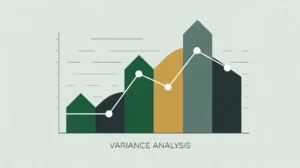Importance of the Grant Dependence Ratio
The grant dependence ratio measures the extent to which a nonprofit relies on grants as its primary source of revenue. It matters because high dependence on grants can create vulnerability if funders reduce support, shift priorities, or impose restrictive conditions. A more balanced funding mix, which includes donations, earned income, and investments for example, can provide resilience. For nonprofits in social innovation and international development, this ratio is especially critical since many organizations depend heavily on bilateral, multilateral, or foundation grants. Understanding this ratio helps boards and donors evaluate sustainability and risk exposure.
Definition and Features
The grant dependence ratio is defined as:
Grant Revenue divided by Total Revenue.
Key features include:
- Concentration Indicator: reveals reliance on grants relative to other funding sources.
- Risk Assessment: higher ratios indicate potential vulnerability to donor shifts or grant expiration.
- Strategic Use: informs diversification strategies and fundraising priorities.
- Donor Signal: helps external stakeholders gauge how resilient the organization is to funding changes.
How This Works in Practice
If a nonprofit earns $9 million of its $15 million revenue from grants, its grant dependence ratio is 0.60 (60%). While this shows strong donor support, it also signals vulnerability if major grants end. Leadership may respond by growing individual giving or social enterprise income to diversify. Boards often track this ratio annually to ensure the organization is not over-reliant on a small number of institutional funders.
Implications for Social Innovation
For nonprofits in social innovation and international development, the grant dependence ratio highlights both strength and fragility. Heavy reliance on grants may enable rapid program growth but limit flexibility and increase exposure to donor-driven priorities. A balanced ratio reassures funders that the nonprofit can weather shifts in donor policy, delays in disbursement, or competitive grant cycles. By monitoring and communicating this ratio, nonprofits can demonstrate strategic thinking around sustainability, credibility in managing donor reliance, and readiness to pursue systemic change with a diversified base of support.







